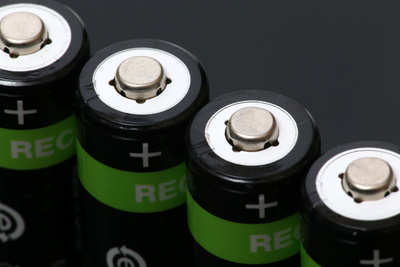From transport to energy storage, this is the way forward to reduce the environmental impact and downside risks of our increasingly electrified economy.
The European Commission is going to adopt a new legislative proposal today to boost the market for sustainable batteries, including those used for electric vehicles, trains, energy storage, smartphones and home appliances. An official announcement is expected by Thursday.
The news comes as EU officials prepare to publish their Sustainable and Smart Mobility strategy – a plan to reduce transport emissions across the EU by 90% by 2050 – and following the announcement by the European Investment Bank to allocate more than €1 billion to battery-related projects.
As a key part of the European Green Deal, the proposal represents a much-needed step forward to reconcile Europe’s quest for the electrification of our economy with the need for resource efficiency and sustainability.
Batteries are necessary to phase out diesel and petrol cars and replace fossil fuels with clean energy in other sectors of the economy. However, the extraction of raw materials used to produce them has led to the depletion and pollution of waterways, soil and other natural resources in many areas of the world. The carbon footprint of the battery production chain is also huge – see figures below.
According to a leak circulated this week, this new legally-binding framework – an update of the existing EU batteries directive published in 2006 – will focus on:
- Ensuring sustainable sourcing and mandatory due diligence across the supply-chain
- Boosting the production of longer lasting and reusable batteries
- Improving recyclability of batteries by upgrading targets and incentivising recycled content to reduce the extraction of primary raw materials
- Aiming to phase out non-rechargeable batteries from the market
- Improving the separate collection of batteries for recycling and reuse
- Replacing some of the most toxic technologies with clean alternatives
The proposed measures will be discussed by the European Parliament and national governments before becoming part of an EU-wide, legally-binding regulation in 2021.
Piotr Barczak, a Policy Officer for the Circular Economy with the European Environmental Bureau (EEB), said: “The proposal is the way forward to reduce the environmental impact and downside risks of our increasingly electrified economy. If produced from responsibly sourced materials, more efficient and durable batteries can help mitigate the environmental impact of mining. At the same time, they can also make Europe less dependent on imports from third countries by boosting the internal market for secondary raw materials”
Rita Tedesco, Programme Manager at ECOS, said: ‘The electrification of transport is an important step forward but we should not embrace it with our eyes closed. We are pleased to see the European Commission’s ambition for Europe to have the world’s most sustainable battery industry, but more can be done to ensure batteries are reused after their first life and properly recycled. We will remain vigilant: most of the technical aspects that will make these ambitions a reality will be decided by standardisation organisations and ECOS will work to make sure they do not hinder the Commission’s ambition.’
The problem with batteries
- If recycling rates do not grow sufficiently by 2050, the reserves of copper, lithium, nickel and manganese in existing mines will be exhausted and much of the depletion will be due to the batteries required by electric vehicles.
- The production of a long capacity battery for a typical electric vehicle can result in almost 9 tonnes of CO2 emissions – the equivalent of the electricity use of more than one household over a year.
- The extraction of raw materials such as lithium costs enormous amounts of energy and water. In the Chilean region of Salar de Atacama, mining activities consumed 65% of the region’s water supplies, forcing local farmers to buy water from other areas.
- Because of increasing demand for electric vehicles, the global lithium-ion market is set to grow by up to 30% each year.











